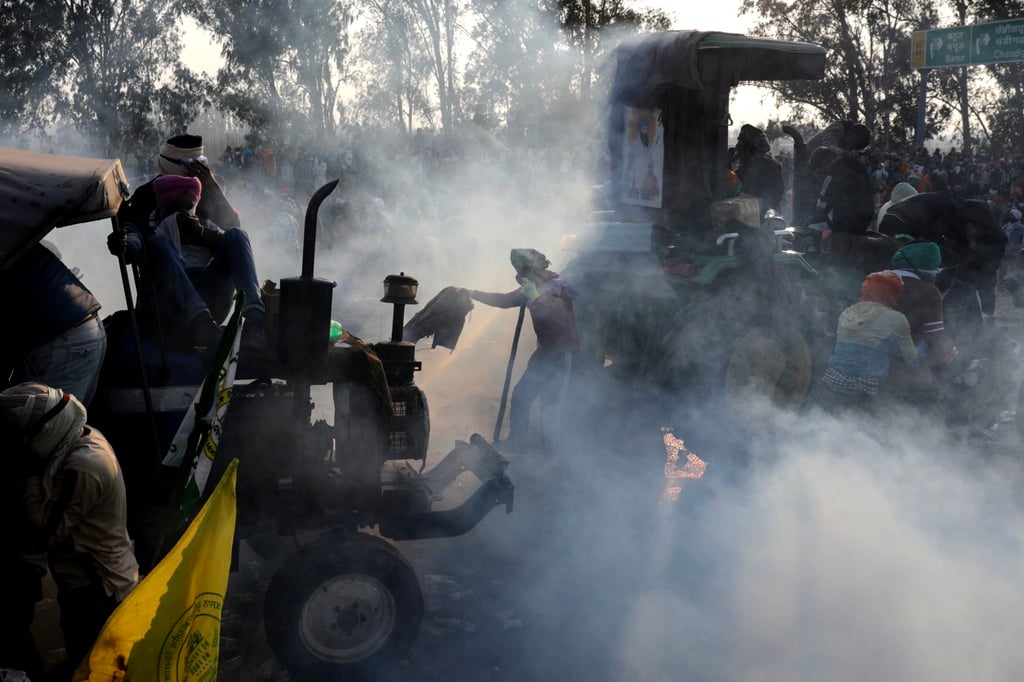Indian farmers vow to continue fight for crop prices even as police use ‘immoral’ tear gas on protesters
- Farmers are rallying to hold the government accountable to its promise of a minimum crop price, and more, after similar protests in 2020
- PM Narendra Modi is defying protesters’ demands amid inflation fears, even as the protest threatens to sway the vote in an agriculture-dependent nation

Farmer Karamjeet Singh, 42, shows no signs of fatigue as he organises food arrangements for thousands of fellow farmers gathered at the Shambhu border of Punjab and Haryana. Since Tuesday, they have been on a mission to march to India’s capital city, New Delhi, to press for their demands.
The firing of tear gas by police did not dampen their spirits as they rallied to the call of two farming organisations for the “Delhi Chalo” movement, which aims to pressure India’s ruling Bharatiya Janata Party (BJP) government into meeting their demands, including legislation on Minimum Support Prices (MSP) for crops and loan waivers.
Protesters who spoke to This Week in Asia said they were of the view that authorities “favoured corporate interests and big capitalists”, leaving in limbo promises made in 2020 to farmers. With this segment forming a sizeable voter base ahead of the elections, the movement is politically significant.

Farmers from Punjab and Haryana commenced their march towards the capital on February 13. However, their entry into Delhi was thwarted as state authorities closed all entry points and blocked roads to prevent their access.
The initial clashes between police and the farmers had started at the Shambhu area of Ambala, situated on the border between Punjab and Haryana. Following the strategy of their Delhi counterparts, the Haryana police set up blockades to prevent protesters from advancing.
Police also dropped tear gas on the protesting farmers using drones, a move that legal experts called “immoral and illegal”.